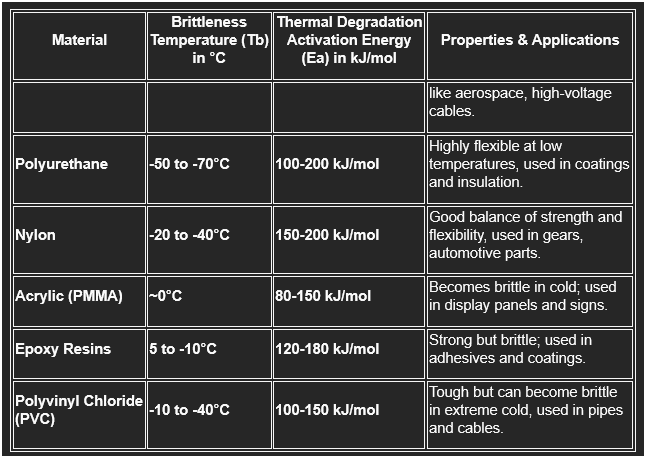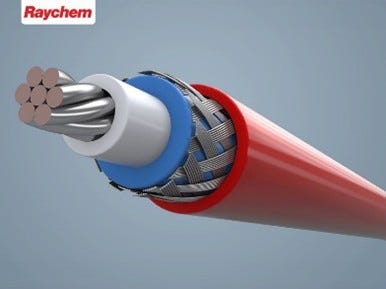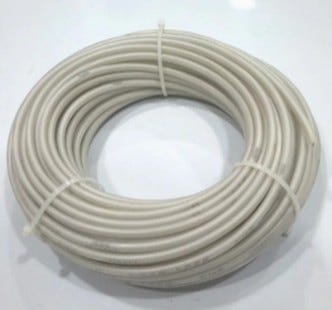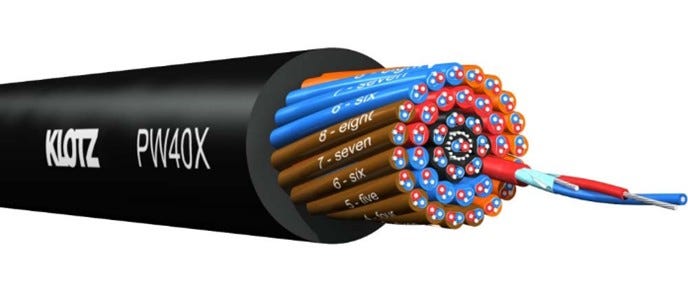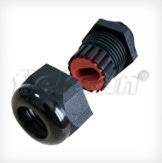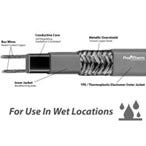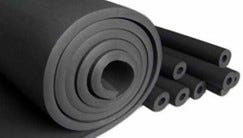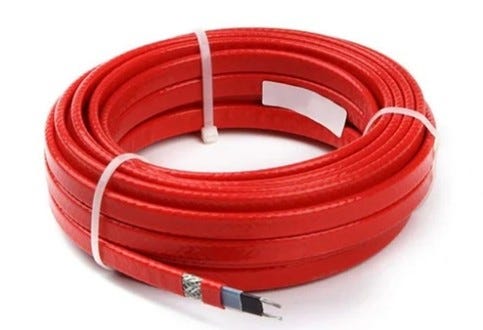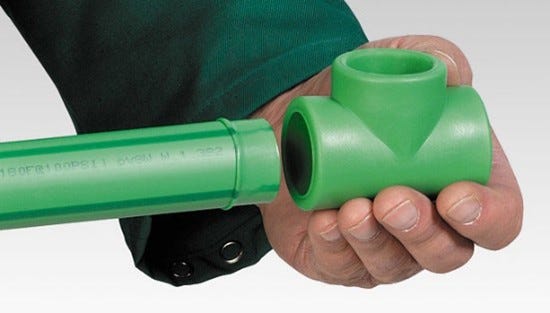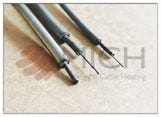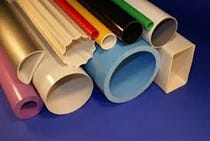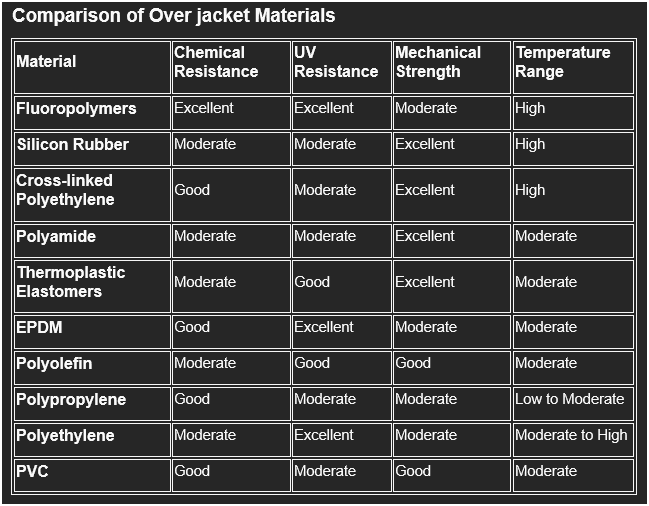Role of Overjackets in Electrical Heat Tracing
Exploring the critical role of overjackets in ensuring efficiency and durability in electrical heat tracing systems
Abstract
The overjacket is a critical component of electrical heat tracing systems, providing essential protection and enhancing the system's performance in diverse environments. This article explores the material properties of overjackets, their role in safeguarding heat tracing cables, and their suitability for specific applications. By examining various materials and their characteristics, such as resistance to chemicals, UV rays, and mechanical stress, this article highlights the importance of selecting the appropriate overjacket material for optimal functionality and durability in industrial and commercial settings.
Introduction
Electrical heat tracing systems are essential for maintaining process temperatures, preventing freezing, and ensuring the safe operation of industrial pipelines and equipment. Among the key components, overjackets play a pivotal role in protecting the cables and ensuring their performance over time. This article delves into the material properties of overjackets and their application in various industries, emphasizing the importance of material selection based on environmental and operational conditions.
Key Properties of Overjacket Materials
To prove and validate the key properties of overjacket materials—chemical resistance, UV resistance, mechanical strength, and temperature tolerance—we can rely on established testing methodologies and standards used in material science.
Target Materials for Comparison:
Fluoropolymers
Silicon Rubber
Cross-linked Polyethylene (XLPE)
Polyamide
Thermoplastic Elastomers
EPDM
Polyolefin
Polypropylene
Polyethylene
Polyvinyl Chloride (PVC)
Chemical Resistance
Testing Standard: ASTM D543 - Standard Practices for Evaluating the Resistance of Plastics to Chemical Reagents.
Mathematical Proof/Metric:
Weight change (ΔW) or tensile strength retention (TSretention) after chemical exposure can quantify chemical resistance:
A high TS(close to 100%) indicates excellent resistance.
Tensile Strength and TS Retention (%): Tensile strength (TS) is the maximum stress a material can withstand while being stretched or pulled before breaking. It is a crucial property in determining a material’s mechanical durability.
The TS retention (%) value indicates how well a material maintains its tensile strength after exposure to chemicals. A high TS retention suggests that the material resists chemical degradation effectively. If a material has a TS retention close to 100%, it means that it retains almost all of its original strength, even after exposure to harsh chemicals.
Example: Fluoropolymers retain over 95% of their tensile strength after prolonged acid or solvent exposure, as reported in ASTM studies. This high TS retention proves that fluoropolymers are excellent in terms of chemical resistance, making them a preferred choice when compared with other target materials.
UV Resistance
i. Testing Standard: ASTM G154 - Standard Practice for Operating Fluorescent Ultraviolet (UV) Lamp Apparatus for Exposure of Nonmetallic Materials.
ii. Mathematical Proof/Metric:
UV degradation is quantified by measuring the loss in elongation at break (Eb) after UV exposure:
iii. Elongation at break (Eb)
is the measure of a material's ability to stretch before breaking. It indicates the flexibility and durability of the material under mechanical stress. A higher retention of Eb after UV exposure means better UV resistance.
UV-resistant materials like fluoropolymers exhibit UV_(retention(%)) > 90%.
iv. Example:
Polyethylene over jackets subjected to UV for 1000 hours retain >90% tensile and elongation properties
v. Comparison with Other Materials:
Fluoropolymers: Retain >90% of their elongation and tensile properties after prolonged UV exposure, making them highly UV-resistant.
Polyethylene (PE): Generally retains 80-90% of its properties, depending on the formulation and stabilizers used.
Polyvinyl Chloride (PVC): Tends to degrade more significantly under UV exposure, showing cracking and brittleness over time with a retention rate of around 60-80%.
Nylon: Susceptible to UV degradation, with retention often below 50% unless UV stabilizers are added.
Mechanical Strength
Testing Standard: ASTM D638 - Standard Test Method for Tensile Properties of Plastics and ASTM D256 - Standard Test Methods for Determining Izod Pendulum Impact Resistance.
Mathematical Proof/Metric:
Tensile Strength (σT):
Where F is the applied force, and A is the cross-sectional area.
Impact Energy (E):
In the equation E = ½ mv², v represents the velocity of the impacting object just before it strikes the material being tested. It is a crucial factor in determining the material’s ability to absorb energy under sudden impact.
What does the E value tell?
The impact energy (E) indicates how much energy a material can absorb before fracturing. A higher E value means the material is more resistant to sudden impacts, making it suitable for applications requiring toughness, such as protective coatings, gears, or structural components.
iii. Example:
Polyurethane has tensile strength >50 MPa and high impact energy (E), meaning it can withstand both high stretching forces and sudden shocks. This makes it ideal for abrasive conditions, such as industrial linings or wear-resistant parts.
iv. Comparison with Other Materials:
Polyurethane: High tensile strength and high impact energy → Tough and durable.
Acrylic: Moderate tensile strength but lower impact resistance → Brittle.
Nylon: Good tensile strength and decent impact resistance → Flexible and strong.
Epoxy: High tensile strength but low impact energy → Strong but brittle.
Temperature Tolerance
Testing Standard: ASTM D746 - Standard Test Method for Brittleness Temperature of Plastics and Elastomers by Impact.ii.
Mathematical Proof/Metric:
Tb: Brittleness temperature below which material fails under impact.
Tb=Temperature at failure point
Thermal degradation activation energy (Ea) is calculated via thermogravimetric analysis (TGA) using the Arrhenius equation:
Where:
k = Rate constant (unit depends on reaction type, e.g., s⁻¹ for first-order reactions)
A = Pre-exponential factor (same unit as k)
Ea = Activation energy (Joules per mole, J/mol)
R = Universal gas constant (8.314 J/mol·K)
T = Temperature (Kelvin, K)
iii. How is Tb Related to the Arrhenius Equation?
The Arrhenius equation calculates k, which indicates the rate of thermal degradation.
Tb is not directly derived from the Arrhenius equation but is experimentally determined using ASTM D746.
However, knowing Ea helps estimate at what temperature a material starts degrading significantly, which can correlate with its low-temperature embrittlement.
iv. What Does the Tb Value Mean?
A lower Tb means the material remains flexible at very low temperatures.
Example:
Fluoropolymer overjackets have Tb < -100°C and Ea high enough for operation above 200°C.
This shows exceptional thermal tolerance, making them ideal for extreme cold and high-heat environments.
Here’s a comparison of materials based on their brittleness temperature (Tb) and thermal degradation activation energy (Ea):
Key Takeaways:
Lower Tb → Better cold resistance.
Higher Ea → More thermal stability at high temperatures.
Fluoropolymers are among the best for extreme environments, while acrylic and epoxy are prone to brittleness in cold conditions.
Detailed Overview of Overjacket Materials
Fluoropolymers
Properties: Exceptional chemical and UV resistance, high-temperature tolerance.
Applications: Ideal for chemical plants and environments with exposure to harsh chemicals and UV radiation.
Silicon Rubber
Properties: Excellent flexibility, heat resistance, and electrical insulation.
Applications: Used in high-temperature environments and where flexibility is crucial.
Cross-linked Polyethylene (XLPE)
Properties: High mechanical strength, good thermal resistance, and excellent electrical properties.
Applications: Suitable for environments requiring mechanical durability and thermal stability.
Polyamide
Properties: High mechanical strength, wear resistance, and moderate chemical resistance.
Applications: Used in industrial settings requiring abrasion resistance and durability.
Thermoplastic Elastomers
Properties: Flexible, impact-resistant, and moderately resistant to chemicals and heat.
Applications: Common in installations needing flexibility and moderate environmental resistance.
EPDM (Ethylene Propylene Diene Monomer)
Properties: Excellent weather, UV, and ozone resistance with moderate heat resistance.
Applications: Used in outdoor installations exposed to weathering.
Polyolefin
Properties: Lightweight, durable, and resistant to a range of chemicals.
Applications: Suitable for general-purpose applications with moderate environmental exposure.
Polypropylene (PP)
Properties: Good chemical resistance, lightweight, and rigid.
Applications: Used in low-temperature environments with moderate chemical exposure.
Polyethylene (PE)
Properties: Excellent UV resistance, lightweight, and flexible.
Applications: Common in outdoor pipelines and areas with UV exposure.
Polyvinyl Chloride (PVC)
Properties: Good chemical resistance, moderate UV resistance, and high mechanical strength.
Applications: Frequently used in commercial buildings and moderate industrial settings.
Applications of Overjackets in Electrical Heat Tracing
Industrial Settings
Overjackets in industrial environments protect cables from exposure to corrosive chemicals and mechanical damage. For example, fluoropolymer overjackets are commonly used in chemical processing plants due to their high resistance to aggressive chemicals.
Commercial Buildings
In commercial applications, such as freeze protection for pipes, PVC overjackets provide an economical solution with adequate resistance to moisture and moderate environmental stress.
Outdoor Installations
Outdoor installations demand materials with excellent UV resistance and durability. Polyethylene overjackets are often used for heat tracing systems in outdoor pipelines and storage tanks.
Conclusion
Overjackets play a vital role in electrical heat tracing systems by protecting cables from environmental and operational challenges. Selecting the appropriate material based on the application's specific requirements ensures optimal performance and extends the lifespan of the system. Future advancements in material technology may further enhance the durability and efficiency of overjackets, contributing to the reliability of heat tracing systems in even more demanding conditions.









